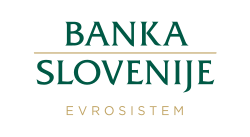 | |
 Seat of the Bank of Slovenia in Ljubljana | |
| Headquarters | Ljubljana |
|---|---|
| Established | 25 June 1991 |
| Ownership | 100% state ownership [1] |
| President | Primož Dolenc (acting) |
| Central bank of | Slovenia |
| Reserves | 350 million USD [1] |
| Succeeded by | European Central Bank (2007)1 |
| Website | www.bsi.si |
| 1 The Bank of Slovenia still exists but many functions have been taken over by the ECB. | |
The Bank of Slovenia (Slovene : Banka Slovenije) is the national central bank for Slovenia within the Eurosystem. It was the Slovenian central bank from 1991 to 2006, issuing the tolar.
Contents
In addition to its monetary role, the Bank of Slovenia is also a financial supervisory authority. In that capacity, it increasingly implements policies set at the European Union level. It is the national competent authority for Slovenia within European Banking Supervision. [2] It is a voting member of the Board of Supervisors of the European Banking Authority (EBA). [3] It is Slovenia's designated National Resolution Authority and plenary session member of the Single Resolution Board (SRB). [4] It is also a member of the European Systemic Risk Board (ESRB). [5]